Get additional resources
Order materials, reference guides, clinical reprints, and more
Primary immunodeficiency (PI) diseases occur in patients who have an intrinsic defect in the immune system. The immune system may have impaired function in one or more components, or may be absent altogether. There are 485 different types currently recognized by the International Union of Immunological Societies—some are common, others are quite rare.1 Because patients with PI do not have fully functioning immune systems, they are more susceptible to infection in the2,3:

Many patients with PI are living healthy lives, thanks to immunoglobulin (Ig) replacement therapy, which replaces the antibodies they are missing. Since half of the antibodies they receive in the Ig infusions are metabolized over 3 to 4 weeks, repeat doses are required at regular intervals. Ig replacement is usually necessary for the patient's whole life.4
| IVIg therapy |
|---|
| Administered once every 3–4 weeks |
| Reduces the incidence of acute serious bacterial infections (aSBIs) |
| Venous access required |
| Requires trained healthcare personnel, either in the patient's home or in a medical setting |
| Systemic ARs are more common |
| Local site reactions are not expected |
IVIg therapy with Privigen allows patients to receive treatment once every 3–4 weeks by their healthcare team—either at home or in a medical setting—as opposed to more frequent SCIg treatments that may be self-administered.

There are several IVIg products currently available in the United States. While all work to boost the patient's immune system, there are some features and attributes to consider when choosing a preparation to stock or prescribe. These include:

Order materials, reference guides, clinical reprints, and more
References: 1. Tangye SG, et al. J Clin Immunol. 2022;42(7):1473-1507. 2. Immune Deficiency Foundation (IDF). About primary immunodeficiencies.https://primaryimmune.org/about-primary-immunodeficiencies. Accessed January 22, 2025. 3. Immune Deficiency Foundation (IDF). Specific diseases. https://primaryimmune.org/about-primary-immunodeficiencies/specific-disease-types. Accessed January 22, 2025. 4. Immune Deficiency Foundation (IDF). Immunoglobulin (Ig) Replacement Therapy. https://primaryimmune.org/treatment-information/immunoglobulin-therapy. Accessed January 22, 2025. 5. Berger M. Choices in IgG replacement therapy for primary immune deficiency diseases: subcutaneous IgG vs. intravenous IgG and selecting an optimal dose. Curr Opin Allergy Clin Immunol. 2011;11(6):532-538. 6. Siegel J. IVIg medication safety: a stepwise guide to production selection and use. Pharm Pract News. Dec 2010. 7. Siegel J. Immune globulins: therapeutic, pharmaceutical, cost, and administration considerations. Pharm Pract News. Jan 2010.
Chronic inflammatory demyelinating polyneuropathy (CIDP) is a rare disorder of the peripheral nerves characterized by progressive weakness and a loss of sensory and motor function in the legs and arms. CIDP is a neurological disorder with an underlying autoimmune basis: the immune system perceives the nerves' protective myelin as foreign and attacks it. Damaged or removed myelin prevents effective communication in the nervous system, as electric impulses transmitted to and from the brain are disrupted or lost.1,2
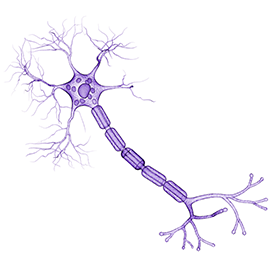

Although CIDP is a chronic disease, Ig therapy can limit the damage to peripheral nerves and help improve motor function. IVIg contains naturally occurring antibodies obtained from healthy volunteers and is administered intravenously.

Order materials, reference guides, clinical reprints, and more
References: 1. GBS/CIDP Foundation International. Chronic Inflammatory Demyelinating Polyneuropathy (CIDP) 101. https://www.gbs-cidp.org/cidp/. Accessed January 22, 2025. 2. US Dept of Health and Human Services. National Institutes of Health. National Heart, Lung, and Blood Institute. Chronic inflammatory demyelinating polyneuropathy (CIDP). https://www.ninds.nih.gov/Disorders/All-Disorders/Chronic-Inflammatory-Demyelinating-Polyneuropathy-CIDP-Information-Page. Accessed January 22, 2025.
Immune thrombocytopenic purpura (ITP) is an autoimmune bleeding disorder resulting in low platelet counts. Patients with ITP often exhibit purpura (red, purple, or brownish-yellow spots) in the skin and mucous membranes and petechiae (red or purple dots) under the skin. People with ITP may also experience nosebleeds, gingival bleeding, heavy menstrual bleeding, and hematomas.1 ITP usually does not have an identifiable precipitating stimulus2; it may occur in isolation (primary) or in association with other diseases (secondary).3
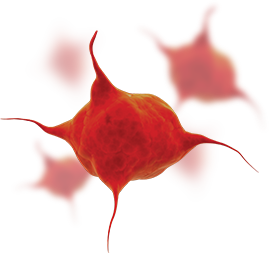
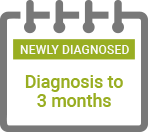
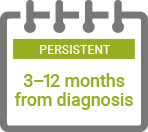
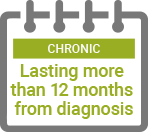
Privigen is indicated for the treatment of chronic ITP. At the time of the Privigen pivotal trial, chronic ITP was defined as lasting 6 months or longer, and the disease criteria for that study population followed the earlier (>6 months) definition of chronic ITP.4 See the FAQs for additional information about ITP.
Treatment depends on the platelet count and the frequency and amount of bleeding experienced by the patient. Immunoglobulin therapy is used as a treatment to increase platelet counts.4 Platelet transfusions may be needed in severe cases.3,5
See the clinical trial results for Privigen in chronic ITP
References: 1. US Dept of Health and Human Services. National Institute of Health. National Heart, Lung and Blood Institute. Immune Thrombocytopenia (ITP). https://www.nhlbi.nih.gov/health/immune-thrombocytopenia. Accessed January 22, 2025. 2. Neunert C, Terrell DR, Arnold DM, et al. American Society of Hematology 2019 guidelines for immune thrombocytopenia. Blood Advances. 2019;3(23):3829-3866. 3. Neunert C, Lim K, Crowther M, et al. The American Society of Hematology 2011 evidence-based practice guideline for immune thrombocytopenia. Blood. 2011;17(6):4190-4207. 4. Robak T, Salama A, Kovaleva L, et al. Efficacy and safety of Privigen®, a novel liquid intravenous immunoglobulin formulation in adolescent and adult patients with chronic immune thrombocytopenic purpura. Hematology. 2009;14(4):227-236. 5. US Dept of Health and Human Services. National Institutes of Health. National Heart, Lung, and Blood Institute. How is (ITP) treated? https://www.nhlbi.nih.gov/health/immune-thrombocytopenia#How-is-ITP-treated?. Accessed January 22, 2025.